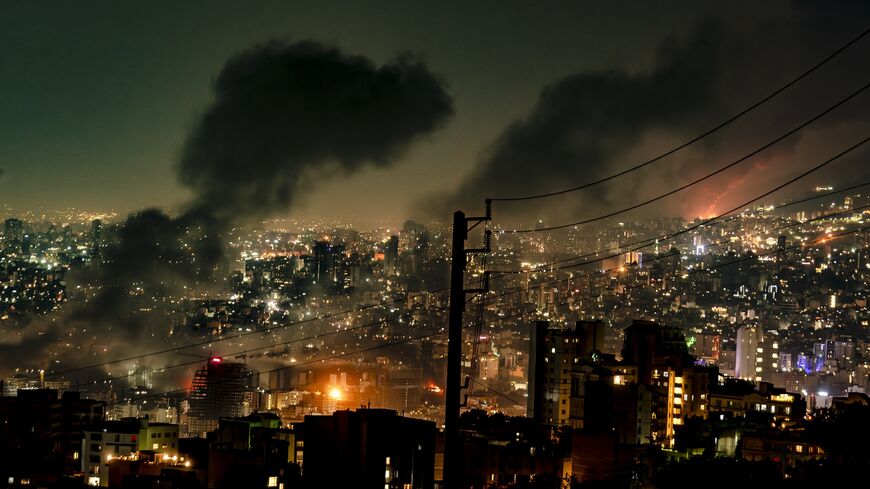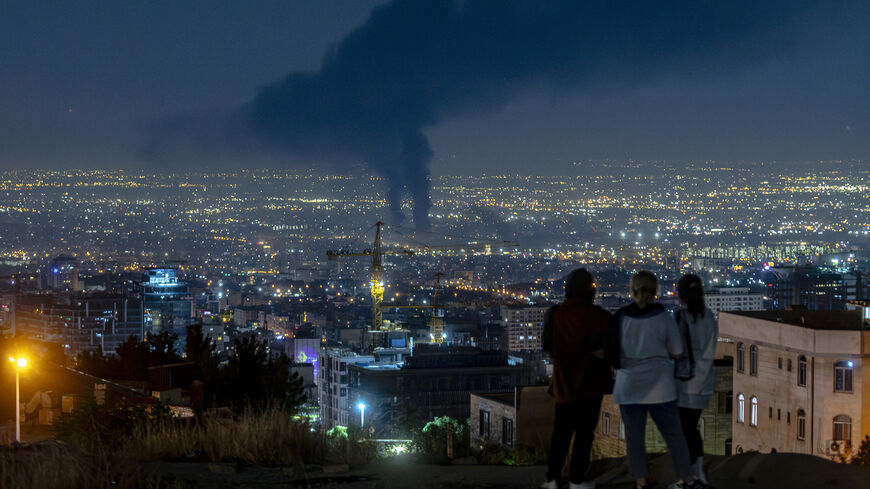Over 200 Israeli strikes in Iran kill 10 IRGC commanders and scientists
The head of Iran’s armed forces and IRGC were killed, as Israel says it hit more than 100 sites across the country.

Israeli strikes on Iran early Friday left at 10 senior Iranian commanders and scientists dead and also damaged several military and nuclear facilities in the country.
Generals and nuclear scientists
The following Iranian military leaders died in the strikes, according to state media.
Brig. Gen. Esmail Qaani — The New York Times reported on Friday that Qaani, head of the Islamic Revolutionary Guard Corps' (IRGC) Quds Force, was killed. Iran did not immediately confirm the news. Al-Monitor has not been able to confirm the report. The Quds Force is an elite special operations division that supports Iran’s proxies throughout the Middle East. Qaani assumed the role in 2020, after the US assassination of his predecessor, Qasem Soleimani. Qaani was rumored to have been killed in an Israeli strike in Lebanon last October, but he emerged days later.
Major General Hossein Salami — Salami led the IRGC from 2019 until his death. He was known for his fiery rhetoric against Israel. Iran’s supreme leader, Ayatollah Ali Khamenei, named Major General Mohammad Pakpour as Salami’s replacement on Friday.
Major General Mohammed Bagheri — Bagheri was the chief of staff of the Iranian armed forces. Earlier in his career, he served in intelligence roles in the IRGC. Bagheri was replaced by Major General Seyyed Abdulrahim Mousavi.
Major General Gholamali Rashid — Rashid was the head of the Iranian armed forces’ Khatam-al Anbiya command center. He was replaced by Major General Ali Shademani.
Brigadier General Amirali Hajizadeh — Hajizadeh was commander of the IRGC’s Aerospace Force. His replacement was not immediately named.
The commander of the Aerospace Force of Iran’s Islamic Revolution Guards Corps (IRGC) Brigadier General Amirali Hajizadeh was assassinated in the Israeli attacks. pic.twitter.com/neBQfZyj3p
— IRNA News Agency (@IrnaEnglish) June 13, 2025
A number of nuclear scientists were also killed.
- Mohammad-Mehdi Tehranchi — Tehranchi was with Islamic Azad University in Tehran.
- Fereydoun Abbasi — Abbasi was formerly led Iran's Atomic Energy Organization, the main nuclear energy body in the country.
Reuters reported that scientists Abdolhamid Manouchehr, Ahmad Reza Zolfaghari, and Amirhossein Feghi were also killed.
CNN and the London-based Iran International reported Ali Shamkhani, an adviser to Khamenei, as being killed, but Iranian officials have yet to confirm his death. The Iranian outlet Nour News reported earlier that he had been severely injured in the Israeli attack.
Physical targets
The Israeli military said over 200 fighter jets struck more than 100 sites across Iran in its overnight attack, as Iranian media reported renewed strikes in Borujerd, Natanz, Shiraz and Tabriz.
In central Tehran, the Israeli attack destroyed the headquarters of the IRGC and the residential complex attached to it. State media had earlier reported the headquarters being hit in the overnight wave of strikes.
Israel attacked Iran's capital early Friday, with explosions booming across Tehran as Israel said it targeted nuclear and military sites.
— The Associated Press (@AP) June 13, 2025
The attack comes as tensions have reached new heights over Tehran's rapidly advancing nuclear program. pic.twitter.com/v4xmCkICAF
The Natanz nuclear facility, in the central province of Isfahan, was also targeted by a series of missiles.
The facility is Iran’s primary and largest uranium enrichment site. It includes three underground buildings — two of which can hold up to 50,000 centrifuges — and six above-ground buildings, according to the Washington, DC-based Institute for Science and International Security. The facility has the capability to enrich uranium to 5% for fuel purposes and 20% for medical research.
A security official in Isfahan province told the semiofficial Mehr News Agency that authorities were assessing the damage at the Natanz nuclear site.
He said no reports of nuclear contamination have been received so far. The International Atomic Energy Agency also confirmed that no radiological or chemical contamination had spread beyond the site.
The Israeli military confirmed the strikes and said the facility has been working for years to produce nuclear weapons and contains the infrastructure needed for military-grade enrichment.
In a statement, the military said its strikes destroyed an underground section of the site that contains "a multi-story enrichment hall with centrifuges, electrical rooms, and other supporting infrastructure."
The strikes also damaged "critical infrastructure enabling the site’s continued operation and advancement of the Iranian regime's project to obtain nuclear weapons," the statement added.
Verified social media video shows heavy black smoke rising from a fire at the Natanz nuclear site in central Iran, after it was hit by Israeli strikes.#Israel #Iran
— Al Arabiya English (@AlArabiya_Eng) June 13, 2025
Read more: https://t.co/LCEChQhurQ pic.twitter.com/JHiTaBN3rV
Another vital facility hit in the Israeli attack is the Arak heavy water nuclear plant, also known as the IR-40 complex, Iranian media reported. The facility is located near the city of Isfahan.
Heavy water is used in the operation of certain nuclear reactors, including those for civilian use, and indirectly in the production process for nuclear weapons. Iran had suspended operations at the site under the 2015 Joint Comprehensive Plan of Action (JCPOA) over concerns that weapons-grade plutonium could be produced there. Under the deal, the facility was to be redesigned to conduct peaceful medical and industrial nuclear research.
Elsewhere, several sites were targeted in the north-central province of Qom. The Fordow fuel enrichment plant, northeast of the city of Qom, was hit, but the extent of the damage remains unclear, with details from Iranian media and officials scarce.
The Israeli strikes hit multiple military facilities and depots across Iran, including in Eslamshahr in Tehran province; Piranshahr, Ilam, and Hamedan, in the west; Isfahan and Borujerd in the northeast; and Ahvaz in the southwest.
There were reports of explosions near several military facilities and air defense systems in the city of Tabriz, in the northeast, and strikes in the cities of Bandar Abbas, Kermanshah, Khondab and Khorramabad.








